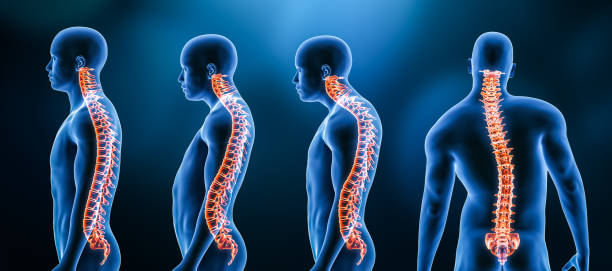Learn More About Osteoporosis: Recognize Signs and Understand Symptoms
Osteoporosis is a progressive bone disease characterized by decreased bone mass and deterioration of bone tissue, leading to increased bone fragility and risk of fracture. Often called a "silent disease," osteoporosis develops slowly over years without symptoms until a fracture occurs. Understanding this condition is crucial for early detection and effective management. This article explores what osteoporosis is, its common symptoms, risk factors, diagnostic methods, and steps to maintain bone health.

What Is Osteoporosis?
Osteoporosis occurs when the body loses too much bone mass, makes too little bone, or both. As a result, bones become weak and may break from minor falls or, in severe cases, from simple actions like sneezing or bumping into furniture. The term “osteoporosis” literally means “porous bone,” accurately describing how the condition affects bone structure. Under a microscope, healthy bone resembles a honeycomb structure. In osteoporotic bone, the holes and spaces in this honeycomb become significantly larger, reducing bone density and strength.
The disease process often begins years before diagnosis. Throughout life, our bodies continuously remove old bone tissue and replace it with new bone. However, after around age 30, this bone remodeling process becomes imbalanced, with bone loss occurring faster than rebuilding. This natural aging process accelerates for some individuals, leading to osteoporosis.
Common Signs and Symptoms to Watch For
Osteoporosis is often called a “silent disease” because bone loss typically occurs without symptoms. Many people don’t realize they have the condition until they experience a fracture after a minor fall or bump. However, there are some potential warning signs to watch for:
-
Loss of height over time (1-2 inches or more)
-
A stooped or hunched posture (kyphosis)
-
Back pain caused by a fractured or collapsed vertebra
-
Bones that break easily or from minor trauma
-
Decreased grip strength
-
Receding gumlines (as jaw bone density decreases)
One of the most common manifestations of osteoporosis is vertebral compression fractures, which may cause acute back pain that radiates around the body. These fractures can occur during routine activities like bending, lifting, or even coughing. Over time, multiple vertebral fractures can lead to the characteristic “dowager’s hump” or forward curvature of the spine.
Who Is at Risk for Osteoporosis?
Certain factors significantly increase the likelihood of developing osteoporosis. Understanding these risk factors can help identify individuals who may benefit from early screening and preventive measures:
Age and gender play significant roles—women are four times more likely to develop osteoporosis than men, with risk increasing dramatically after menopause due to declining estrogen levels. By age 65, even men experience accelerated bone loss. Body frame also matters; individuals with smaller body frames tend to have lower bone mass and thus higher risk.
Family history strongly influences risk, as osteoporosis tends to run in families. Ethnicity is also relevant, with white and Asian women at highest risk, followed by Hispanic and Black women.
Lifestyle factors that increase risk include:
-
Sedentary lifestyle with limited physical activity
-
Cigarette smoking
-
Excessive alcohol consumption (more than 2-3 drinks daily)
-
Poor nutrition, particularly low calcium and vitamin D intake
Medical conditions associated with higher osteoporosis risk include thyroid problems, celiac disease, inflammatory bowel disease, rheumatoid arthritis, and certain cancers. Additionally, medications like corticosteroids, some anticonvulsants, and certain cancer treatments can accelerate bone loss when used long-term.
How Osteoporosis Is Diagnosed
Proper diagnosis of osteoporosis involves several evaluation methods that help determine bone density and fracture risk. The gold standard for diagnosis is the Dual-Energy X-ray Absorptiometry (DXA or DEXA) scan, which measures bone mineral density at the hip and spine—the most common fracture sites.
The DXA scan results are reported as T-scores:
-
Normal bone density: T-score above -1.0
-
Low bone mass (osteopenia): T-score between -1.0 and -2.5
-
Osteoporosis: T-score of -2.5 or lower
For those who have already experienced a fragility fracture, a diagnosis may be made without DXA testing, as such fractures strongly indicate underlying osteoporosis.
Other diagnostic tools include quantitative computerized tomography (QCT), which provides 3D imaging of bone density, and ultrasound, often used as a screening tool for the heel bone. Blood and urine tests help identify secondary causes of bone loss and assess bone turnover rates. The FRAX tool (Fracture Risk Assessment Tool) combines clinical risk factors with bone density measurements to calculate a person’s 10-year probability of experiencing a major osteoporotic fracture.
Steps to Protect Your Bone Health
Whether you’re at risk for osteoporosis or have already been diagnosed, several strategies can help maintain bone health and prevent further bone loss:
Nutrition plays a crucial role in bone health. Ensure adequate calcium intake—1,000 to 1,200 mg daily for most adults—from sources like dairy products, fortified plant milks, leafy greens, and calcium-rich foods. Vitamin D is equally important as it helps the body absorb calcium. Aim for 600-800 IU daily through sunlight exposure, fatty fish, egg yolks, and supplements if needed.
Regular weight-bearing and resistance exercises stimulate bone formation. Activities like walking, jogging, dancing, and weightlifting help build and maintain bone mass. Balance exercises can reduce fall risk, which is especially important for those with osteoporosis.
Lifestyle modifications are essential: quit smoking, limit alcohol consumption, and maintain a healthy weight. Excessive thinness increases fracture risk, while obesity can lead to falls and fractures.
For diagnosed osteoporosis, medication options include:
-
Bisphosphonates that slow bone breakdown
-
Hormone-related therapies that mimic estrogen’s bone-protecting effects
-
Biologic therapies that inhibit bone resorption or stimulate bone formation
Fall prevention is critical for those with osteoporosis. Remove tripping hazards at home, improve lighting, install grab bars in bathrooms, use non-slip mats, and wear supportive footwear.
This article is for informational purposes only and should not be considered medical advice. Please consult a qualified healthcare professional for personalized guidance and treatment.




